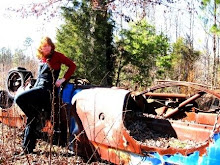
Kudzu has many symbols; negative notations given by environmentalist, southern culture recognization, work opportunities for depressions era.
I noticed yesterday that the Kudzu flower is in bloom. Whatever the symbol, it has a beautiful flower.
 These photos were taken in Granville County yesterday. This field in particular has rotated crops from year to year. Last year they planted tobacco in the first time in many many years. This year they have planted sunflowers for wildlife. Sunflowers attract a diversity of wildlife, including Gold Finches, Doves, quail, turkeys and numerous song birds.
These photos were taken in Granville County yesterday. This field in particular has rotated crops from year to year. Last year they planted tobacco in the first time in many many years. This year they have planted sunflowers for wildlife. Sunflowers attract a diversity of wildlife, including Gold Finches, Doves, quail, turkeys and numerous song birds.
 These Fish (Lepomis auritus) were caught on Little Fishing Creek at Medoc on Sunday. Common names for this fish include robin, redbreast sunfish, redbelly, yellowbelly sunfish, bream. I pulled some of the Fish Details off the Wildlife Resources Commission Website. These details include:
These Fish (Lepomis auritus) were caught on Little Fishing Creek at Medoc on Sunday. Common names for this fish include robin, redbreast sunfish, redbelly, yellowbelly sunfish, bream. I pulled some of the Fish Details off the Wildlife Resources Commission Website. These details include:


